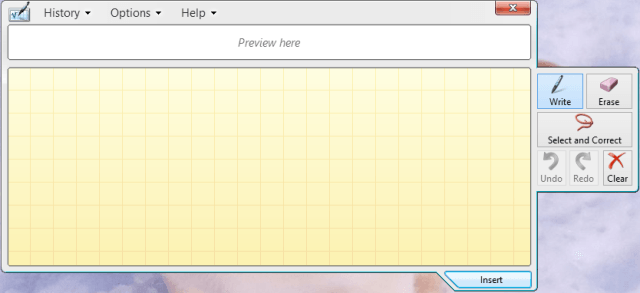

- #MATHTYPE AND INLAGE WITH MATH INPUT PANEL MOVIE#
- #MATHTYPE AND INLAGE WITH MATH INPUT PANEL WINDOWS#

I will cover now some papers, work in progress. I have summarized the most of the current answers here or below. If you have something non-trivial, you still have to write it yourself. You can see my progress on this topic here: Īll of my material (papers, presentations, tools) are here: TL DR The recordings are also very simple: The symbols are written on one line (no \begin possible ways to segment n stokes. In this competition you get a very nice data (meaning: clearly written, no errors in the input as it often occurs in real live) and your classifier has to recognize the recording. There is an international conference on on-line handwriting recognition called ICDAR (international conference on document analysis and recognition) and a competition called CROHME. I am doing research in on-line recognition. This means on-line recognition is simpler than off-line recognition as you can always just generate the end result.
#MATHTYPE AND INLAGE WITH MATH INPUT PANEL MOVIE#
Imagine on-line recognition as a movie where you get exact information where the tip of the pen was, whereas in off-line recognition you only get the end result. On-line recognition means you can use the information how a symbol is written, whereas in off-line recognition you only have a pixel-map (aka "image"). It can prove to be a useful tool for anyone who prefers working with LaTeX, rather than MathML.As the author of, I think I can give this question an update.įirst of all, there are two types of handwriting recognition: On-line and Off-line. Math Input Panel Helper adds support for the LaTeX format, converting the clipboard content using consecutive XSLT transformations and allowing the representation of mathematical information in LaTeX.

MathML expressions can be pasted in any word processing program with support for this markup language, while LaTeX formulas can be displayed by dedicated editors. The context menu also includes an option for automatically pasting the clipboard content, which makes it easier for you to work with Math Input Panel Helper. As mentioned above, you can choose from MathML or LaTeX, depending on your preferences. Right-clicking on the tray icon reveals a menu that comprises options for configuring the target format. Once initialized, this small utility runs in the system tray, without interfering with your work. Math Input Panel Helper extends its capabilities by allowing the automatic transformation of MathML expressions stored in the clipboard into LaTeX formulas that can be then included into your documents. The output can be easily inserted in a word-processing or similar application, providing it supports the Mathematical Markup Language. Math Input Panel features a powerful recognition engine that permits it to automatically convert handwritten math expressions into MathML-compatible formulas.
#MATHTYPE AND INLAGE WITH MATH INPUT PANEL WINDOWS#
Math Input Panel Helper aims to enhance the functionality of the Math Input Panel application that comes with Windows in order to allow the conversion of mathematical formulas to the LaTeX format, aside from the MathML markup.


 0 kommentar(er)
0 kommentar(er)
